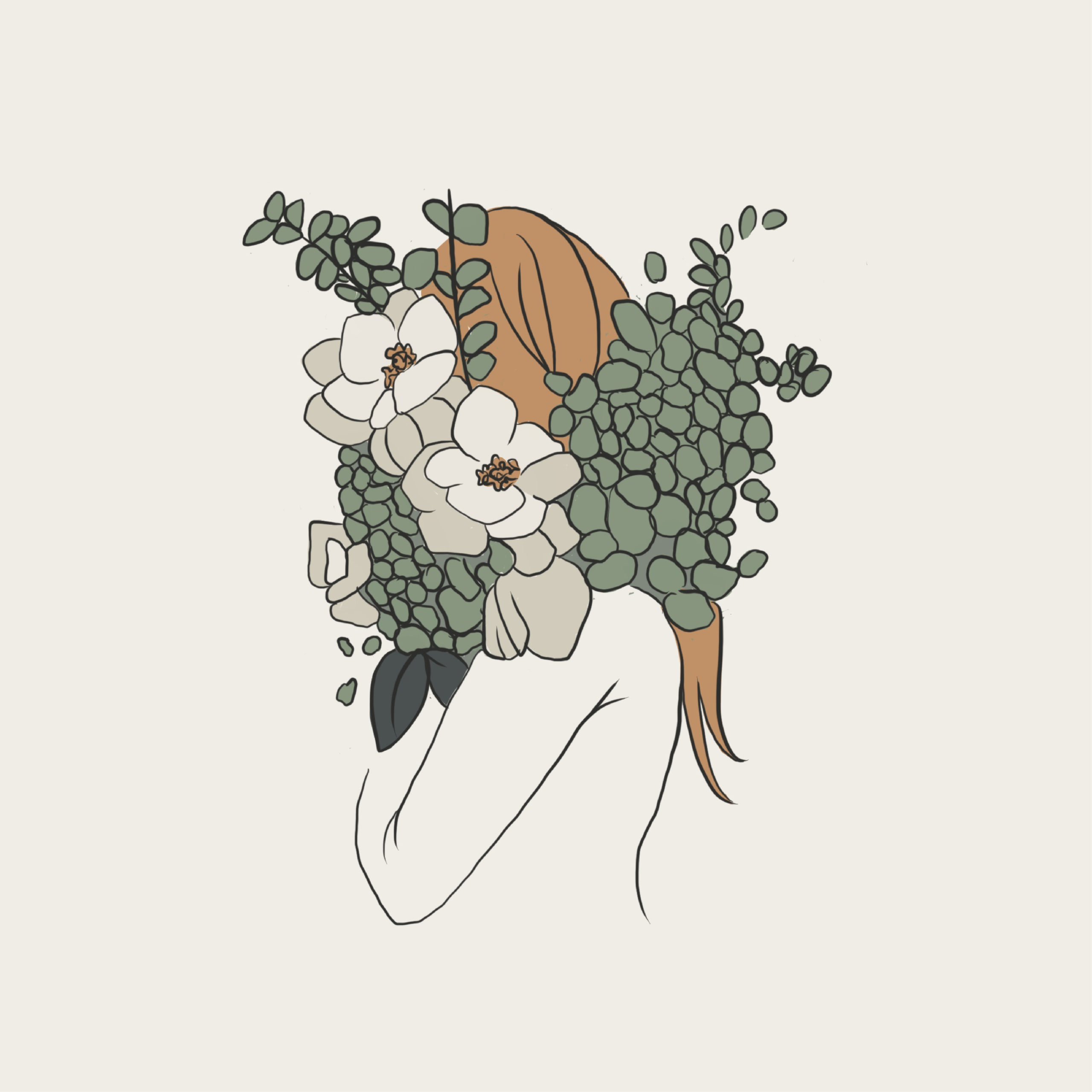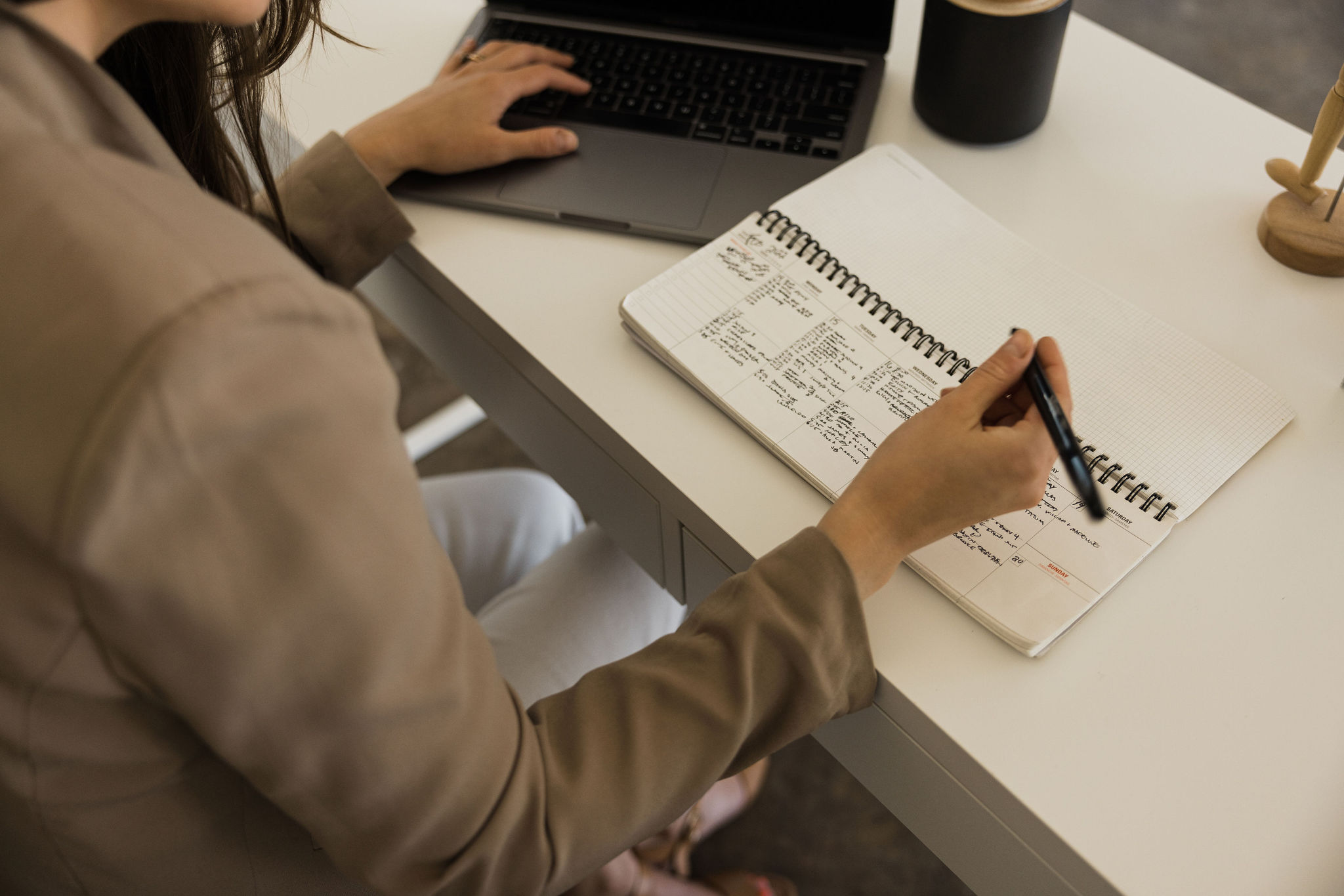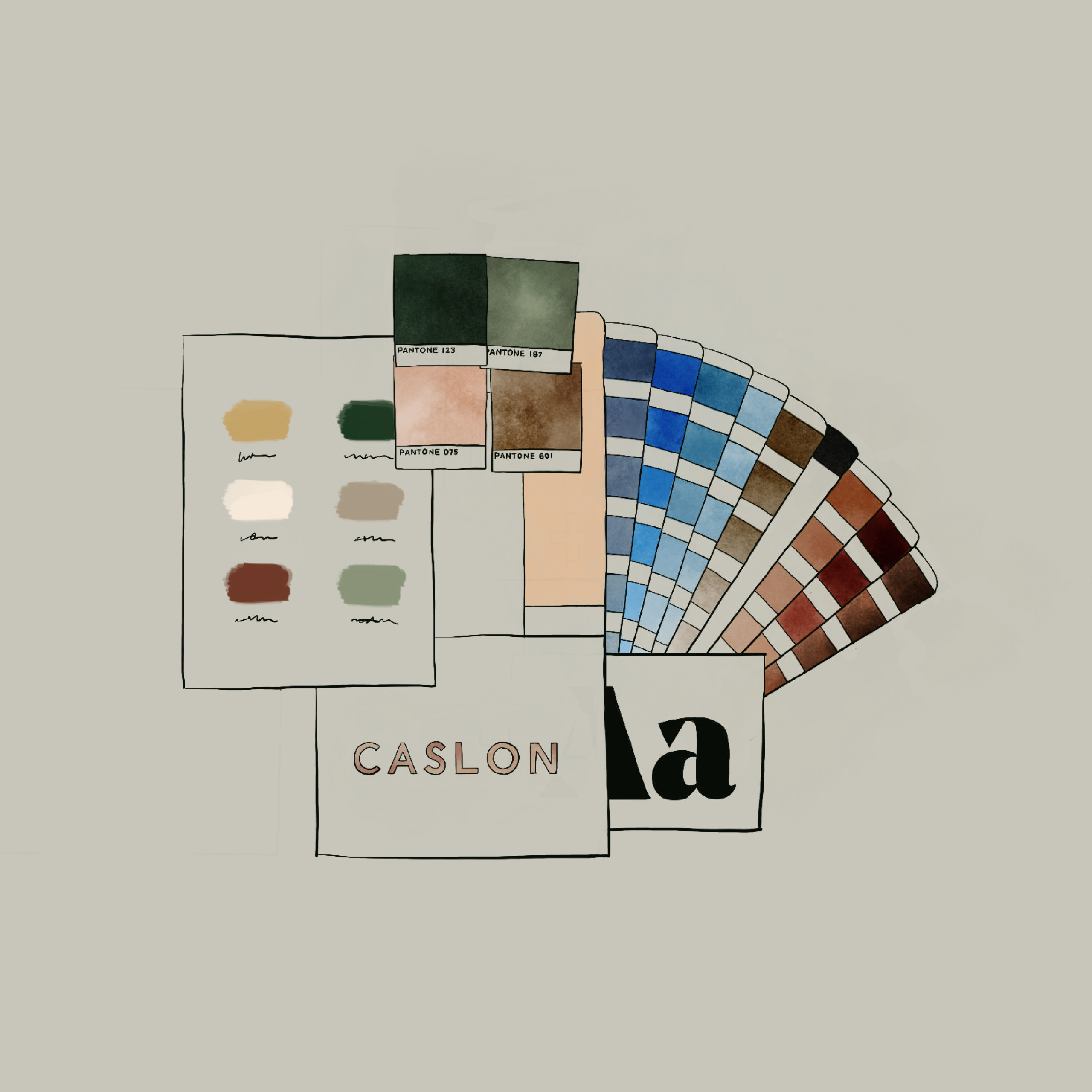If you’ve seen our branding services, you’ve noticed that there are two processes that seem similar but also different: logo development vs. brand identity.
In the Brand Identity experience, we create more than just a logo, but a full visual system to use in your business. This means that instead of plastering one logo design all over the place, you start to be KNOWN for a certain style. It’s the difference between the Jessica Simpson shoe line, and a pair of Jimmy Choos. The biggest way we do that is by creating brand elements, so let’s walk through what that looks like.
Side-note
As a reminder, this quarter I’m walking you step-by-step through a studio brand refresh so you can get a behind-the-scenes look at what it means to go through the branding process. My hope is that it takes the guess work out of the branding experience and helps you decide whether or not you can do it yourself.
What are Brand Elements?
Brand elements are designed assets custom tailored to your brand that work alongside your logo system to create a visual style.
Here are some ideas when it comes to brainstorming visual elements that might work with your story. I suggest selecting ONLY ONE for your project, as you don’t want to overstimulate your audience. I go by the philosophy of doing one thing well instead of trying your hand at everything at once.
Illustrations
These can be a great way to show your process or really connect with your audience, especially if photography isn’t the right fit. For example, I usually suggest illustrations for my clients who are therapists. Most patients don’t want to be the poster child for mental health, so using illustration is a great way to add visual interest while also keeping the clientele private and maintaining trust.
Patterns
These can be such a fun way to compliment photography, and are especially fun when your business needs physical packaging. I love creating patterns that can be used on tissue paper or stationery, or even backdrops for quotes on social media. Some of my favorite brand patterns were created for the photographer Anni Graham to symbolize the different places she gets to visit as an elopement photographer.
Icons
These can have kind of a tech feel to them, but they don’t have to! Icons are a great visual element to grab attention for important information on your website, weave personality into your Instagram story highlights, or guide a student through your course curriculum by creating landmarks.
I started creating illustrations for my blog’s title graphics instead of using photography years ago, and I want to keep that trend. It gives me all The New Yorker feelings when I’m writing them. I may update the style and color palette to match the new look, but it won’t make enough of a statement when I launch since my audience is already use to seeing them and I don’t plan to dramatically change the style.
My business stays pretty digital, and while I’d love to develop physical products and a mail experience in the future, it doesn’t feel like the right time in the age of COVID, so for me, I’m going to pass on patterns since I can’t think of an immediate use for them.
For icons, I could really see this being useful for my Instagram story graphics but that’s about it. I also worry that the style might compete with the illustrations I do for the blog. I don’t have much inspiration here or a clear idea, so I’m going to pass on these as an element with this launch.
Selecting An Element For Launch
Deciding on an element doesn’t have to be tricky, because it also doesn’t have to be permanent. Think about what will work best for you RIGHT NOW. What part of your business do you really need to drive home? What’s the most important part of your brand story that needs to sit in the mind of your audience?
The most important thing is to think about where you’ll use it – social media, website, packaging, you get the idea.
Creating Brand Elements Yourself
You don’t have to be a brand designer like me in order to build elements for your brand yourself. Just a little imagination 🙂
Similar to when you’re just starting out with your logo, your brand elements don’t have to be completely custom to work for your business. The most important thing is that they have a consistent style and color palette.
I strongly recommend looking for illustrations, patterns, and cool icons on Creative Market. There are so many amazing designers and artists creating resources at an affordable price that will help you add to your brand identity while you’re still in the DIY phase.
Making a Plan for Brand Photography
There’s one more really important element to consider while we’re still creating the style of your brand – and that’s photography.
You’ve got two options when it comes to getting photography for your brand – hire a photographer or find stock.
If you decide to hire a photographer, I strongly recommend building a relationship with a local photographer or a good long-distance friend who doesn’t mind visiting a few times a year! This will help you keep a similar style without too much effort, and even allow you to schedule something last minute if you plan to launch a new product or service. Regardless, I recommend doing at least one new photoshoot a year so your headshots are current and your content feels fresh.
If you’re going the stock route, it’s important to spend a little extra time thinking about the style of your photography. You’ll probably want to create a moodboard similar to the one we made for your logo, refer back to this blog post (link to post no. 77), so you keep yourself in check as you source your own images. You’re going to mainly be looking for a similar color palette and overall vibe.
Here’s a look at what two different photography styles for a copywriter might look like:
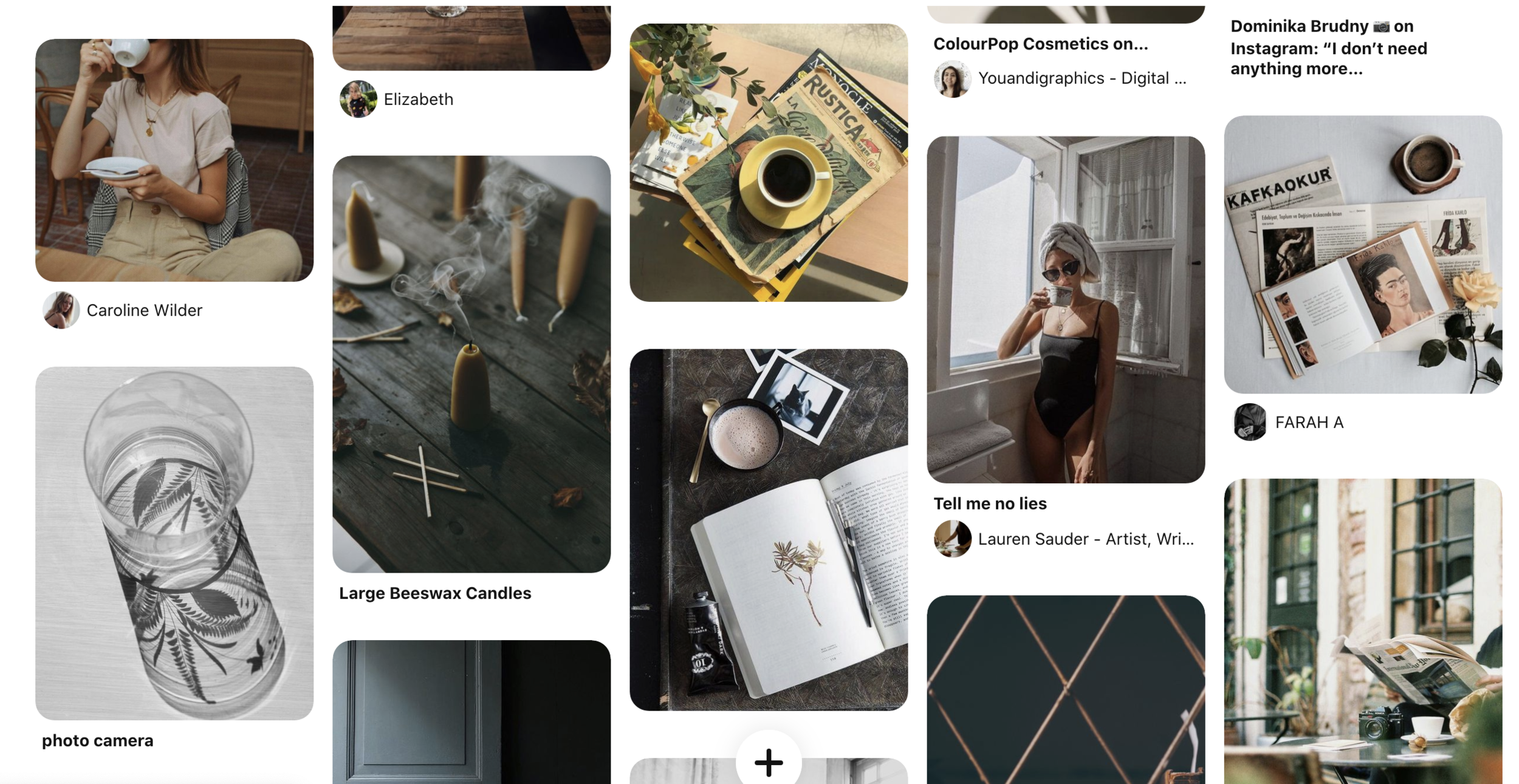
This style is nostalgic, quiet, and classic.
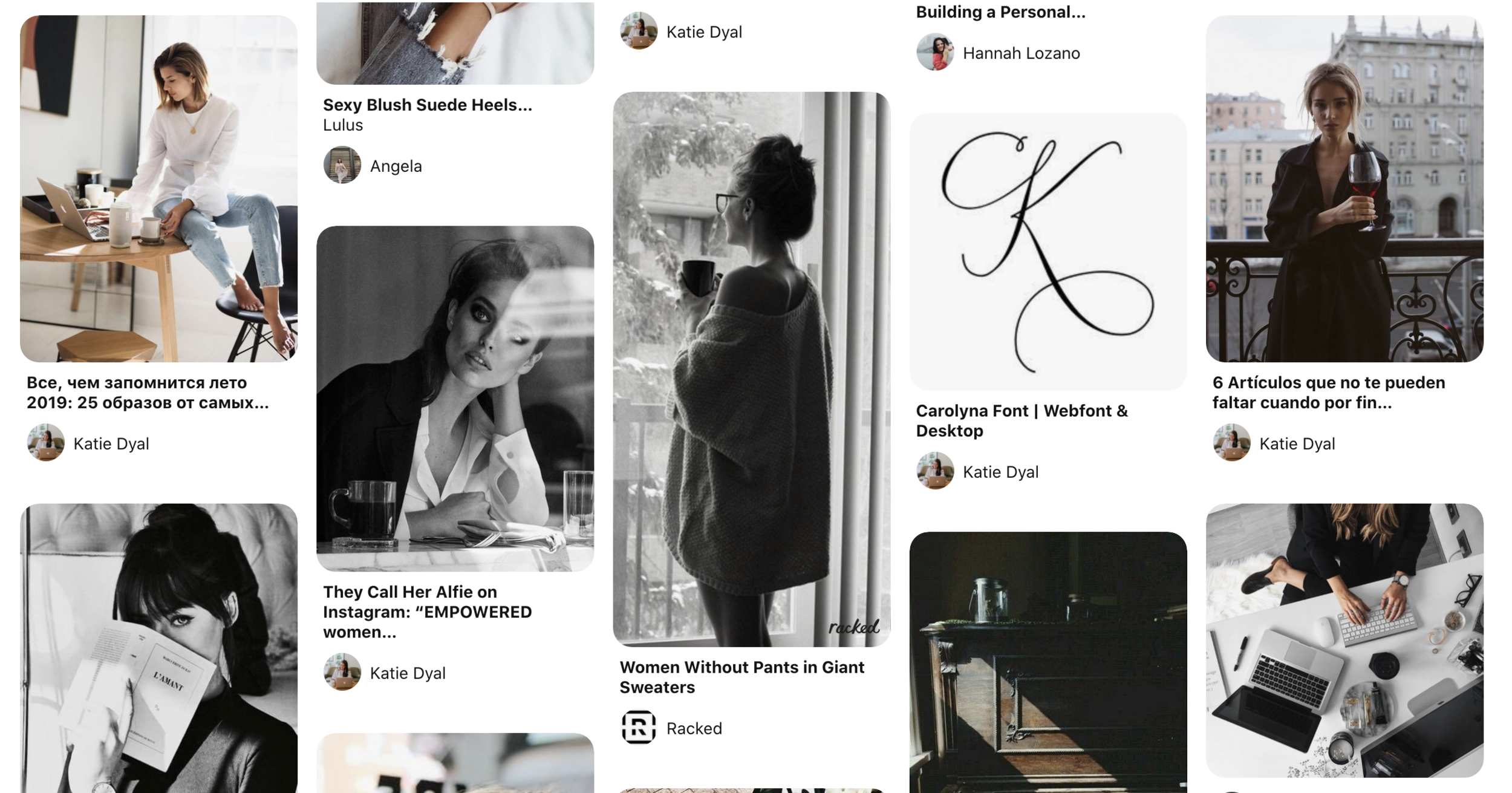
This style is nostalgic, quiet, and classic.
Here’s my brand photography strategy.
I’ve had the pleasure of working with a few good friends for my studio photography over the years, Beckley Photography in Dallas and Talitha Photography in Seattle. Both have an amazing eye for lifestyle and tend to have a bit of an editorial spin when it comes to editing. They know how to tell a story through images and it aligns with how I want my studio to be represented. Building a relationship with both women has been such a fun part of building my brand, and a great way to continue getting a fresh perspective and opinion as I make decisions and grow!
I actually have a shoot planned with Talitha in my new studio in Montana in anticipation of the site launch and I can’t WAIT to show you what we have planned!!
